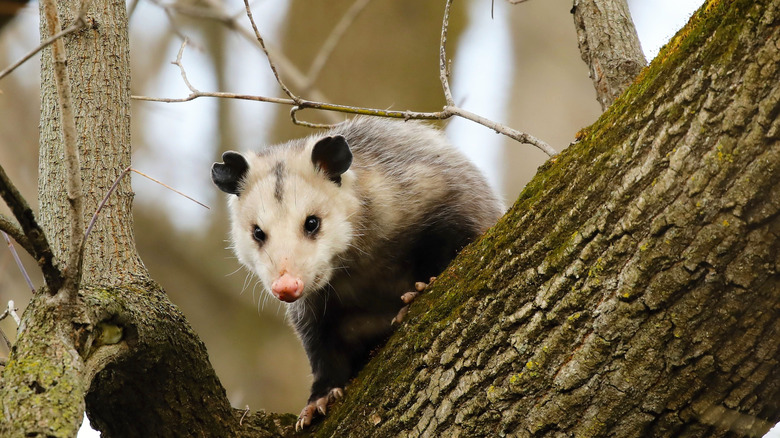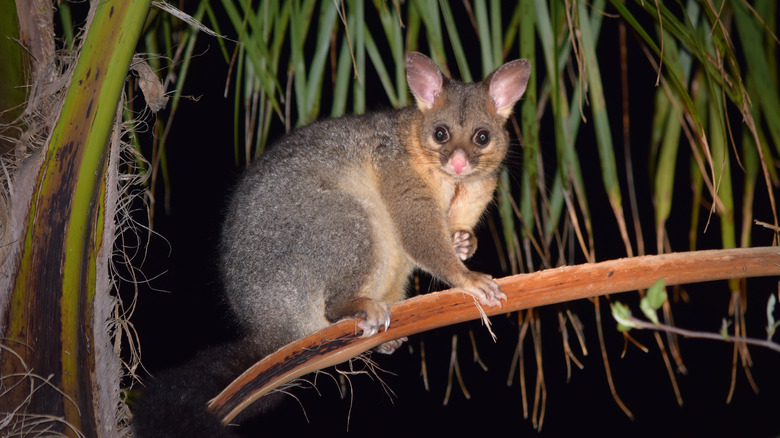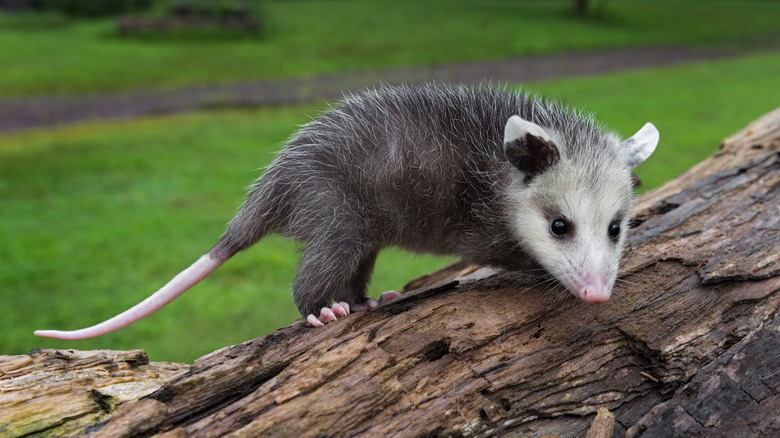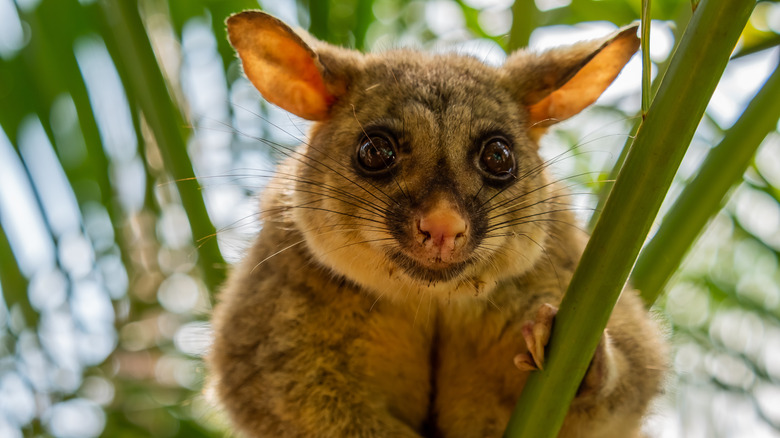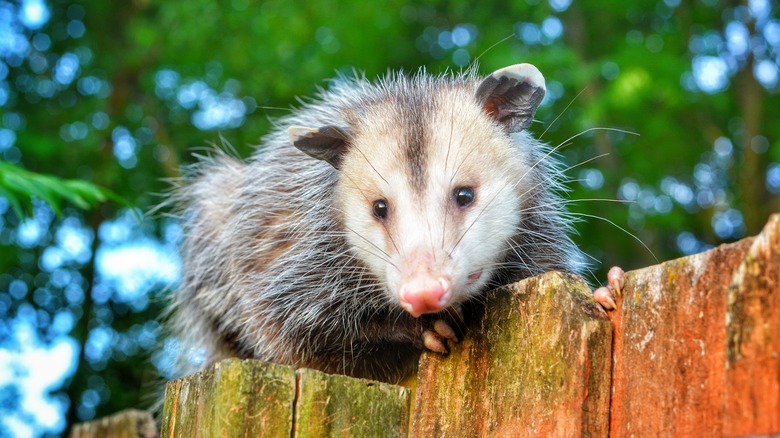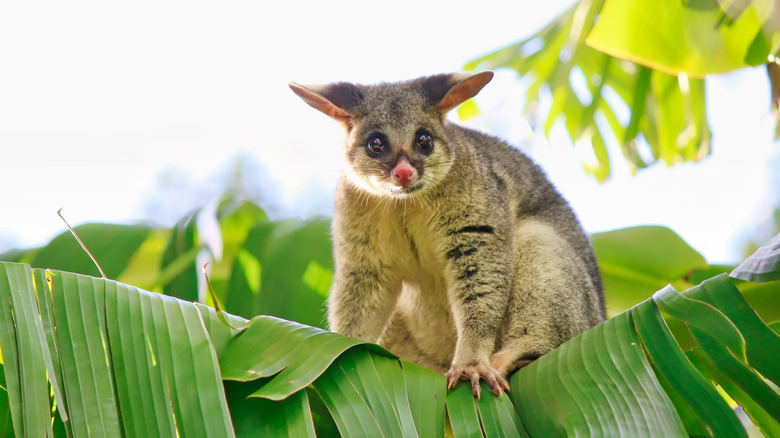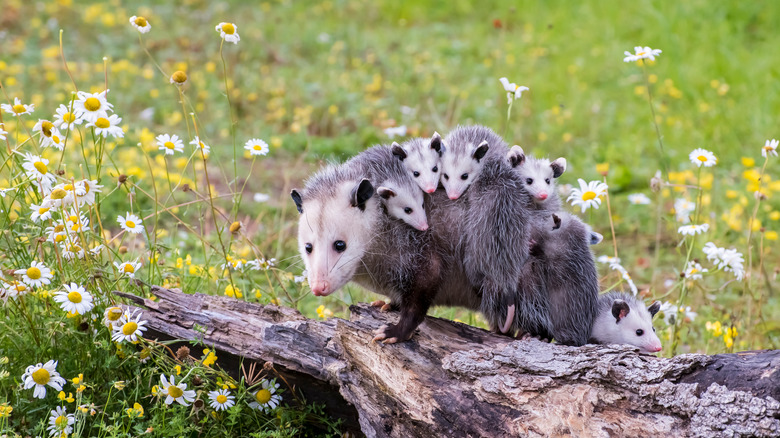Possum Vs. Opossum: What Is The Difference?
Many people confuse possums and opossums for one another, which is understandable given the similarity of their names. That being said, the two animals have quite a few differences between them.
If you live in North America, the marsupial you're familiar with is the opossum, or Didelphis virginiana, according to Summit Environmental Solutions. Opossums are commonly misnomered as possums when in reality, possums, also known as Trichosurus vulpecula, are another marsupial native to Australia. While the animals share some things in common, like being marsupials, quite passive, adaptable to humans, and a little mischievous, there are a lot of nuances between the two mammals, especially considering they live on entirely different continents.
The differences between the animals are worth knowing in case one of these critters frequents your home. For example, if you're dealing with an opossum in your backyard, knowing the animal's specific behaviors, routines, and social patterns, as well as being able to accurately distinguish it from a brushtail possum, is important.
How does the appearance differ?
One major distinguishing feature between possums and opossums is their appearance. You can tell the marsupials apart by looking at their tails, says Bob Vila. Many people in North America are familiar with the opossum's skinny, bald tail, which resembles that of a rodent. On the other hand, possums have long, fluffy, thick tails, very similar to a squirrel's tail but longer and less curled.
Opossums are generally larger than possums, too. Possums tend to average at 5 pounds, but different species can be anywhere from an ounce to 20 pounds or more. There is only one North American opossum species, though, and they tend to weigh around 8.8 to 13.2 pounds.
Lastly, possums and opossums have very distinguished faces from one another. Opossums are easily recognized for their long, white pointed faces and coarse-looking fur ranging from salt and pepper gray to white. They also have sharp, jagged teeth and black, somewhat beady eyes. Possums, though, are less lanky and more rounded, with softer, thick fur, which ranges from gold to brown to monochrome tones, as well as big brown eyes.
Where does each come from?
As stated earlier, a major distinguishing factor between opossums and possums is their place of origin, the former hailing from North America and the latter primarily found in Australia. That being said, possums are also native to New Guinea, Sulawesi, New Zealand, and China, according to Grammarly.
There are a variety of species of both possums and opossums, which will be covered later. Opossum varieties are a bit more important in terms of location, though. In the United States, for example, the only opossum to be found is the Virginia Opossum, says Summit Environmental Solutions. There's also an opossum only native to South America called the Monito del Monte, though it's more related to Australian possums than North American opossums. On the other hand, there are a variety of possums all across Australia and their other countries of origin, with multiple species being found across the continents.
Are there different species of each?
While both possums and opossums are marsupial mammals, they belong to different orders, and each has a unique set of species within those orders. Opossums belong to the Didelphimorphia order, which, according to Bob Vila, is the largest marsupial order in the Western Hemisphere. While there are over 10 species in the Didelphimorphia order, only one is native to North America — the Virginia Opossum. Other species include the common opossum, native to the northern region of South America, per Animalia, and the white-eared opossum found in northern and eastern South America, per Animal Diversity Web, just to name a few.
Possums, on the other hand, belong to the Diprotodontia order, which has over 100 species, making it the largest marsupial order. Other marsupial species in this order include kangaroos, koalas, wombats, and wallabies, per NH PBS, as well as sugar gliders, feathertail gliders, and honey possums. Brushtail possums specifically belong to the Phalangeridae family, along with cuscuses and the scaly-tailed possum.
What is the difference in behavior?
A similarity between possums and opossums is their relatively docile behavior. Many are familiar with the idiom "playing possum," which refers to feigning ignorance or weakness in a potentially upsetting situation, per Grammarly. This phrase actually stems from the behavior of opossums. According to Bob Vila, when opossums find themselves in a dangerous situation, they don't just play dead but enter a comatose state ranging from a couple of minutes to hours, which helps predators leave them alone. Opossums are also nocturnal and highly solitary, notes Paws. They also have a great memory and sense of smell.
Possums, though, are much friendlier. This is somewhat to their detriment, though. Bob Vila notes they don't have an instinctual fear of humans, making them a target for fur poachers. Possums are not only friendly to humans but other possums as well, according to the Australian Museum. They communicate with their community of possums through sound, often screeching at night during the breeding season to mark territories.
How dangerous is each animal?
Another thing the marsupials have in common is being nonaggressive and neighborhood friendly. If you see a possum or opossum in your backyard, there's no need to worry about it attacking you. The nuances in behavior between the animals are important, though, as they react differently toward humans and animals.
According to Bird Gard Australia, the main issue with possums is their tendency to be a nuisance — hiding in attics, eating insulation, turning over trash cans, urinating to mark their territory, etc. Possums don't attack humans, but they may fight cats or dogs if they feel trapped, warns Cure All Pest Control. They also carry diseases and bugs like mites, ticks, ulcers, and other bacterial infections, which can be caught from contact with fur or feces.
Opossums may seem aggressive, as they tend to hiss at humans when threatened, but they're entirely passive, notes The Humane Society. They may also do things like knock over trash cans, but not often. They also rarely pick fights with animals, and they aren't a common rabies host, per Urban Jungle. However, they do carry diseases like tuberculosis, leptospirosis, tularemia, spotted fever, and more.
How to get rid of each?
While possums and opossums are docile, they can still be a nuisance if they've moved into your backyard or made a home in your attic or under your deck. There is no need to kill the animals, as you can easily set up preventive measures to kick them out.
When it comes to opossums, there's no need to rush them out, notes The Humane Society. They don't stay in one spot longer than a couple of weeks and don't cause many issues. In fact, they tend to eat garden pests like snails and small rodents, as well as spilled trash. Keep them away by sealing your trash can tightly, and secure the base of your deck to prevent them from finding a home there. If they do stay under your deck or get inside your home, simply use a broom to encourage them to leave.
Possums are protected animals, according to RealEstate.com.au, so killing or relocating them is against the law. You can prevent possums by sealing holes in your home, trimming tall trees, securing trash and compost bins, planting garlic, or using humane pest repellents (like ultrasonic waves).
